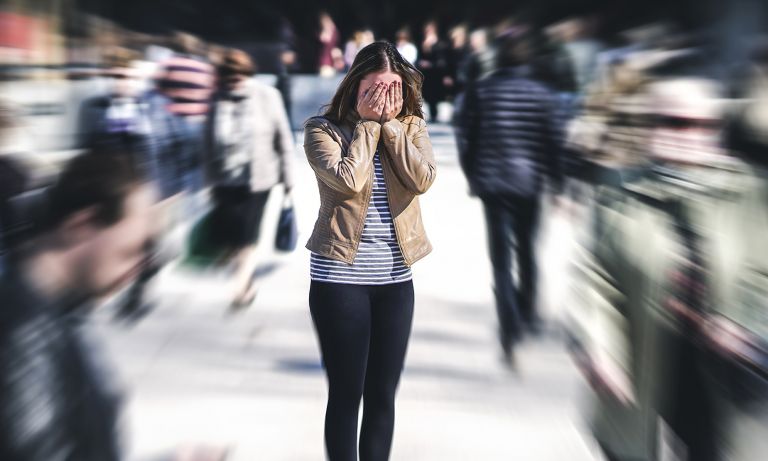What Is Panic Disorder?
Panic disorder is when you’ve had at least two panic attacks (you feel terrified and overwhelmed, even though you’re not in any danger) and constantly worry and change your routine to keep from having another one. It’s a type of anxiety disorder.
One in 10 adults in the U.S. have a panic attack each year. About a third of people have one in their lifetime. But most of them don’t have panic disorder. Only about 3% of adults have it, and it’s more common in women than in men.
Panic Disorder Symptoms
A panic attack is a sudden strong feeling of fear that can happen anywhere, at any time. You’ll have four or more of these signs:
- Pounding or fast heartbeat
- Sweating
- Trembling or shaking
- Shortness of breath or a feeling of being smothered
- A choking feeling
- Chest pain
- Nausea or stomach pains
- Feeling dizzy or faint
- Chills or hot flashes
- Numbness or tingling
- Feeling unreal or detached
- A fear of losing control or going crazy
- A fear of dying
An attack usually passes in 5 to 10 minutes, but it can linger for hours. It can feel like you’re having a heart attack or a stroke. So people with panic attacks often wind up in the emergency room for evaluation.
Without treatment, panic disorder can sometimes lead to agoraphobia, an intense fear of being outside or in enclosed spaces.
Panic Disorder Causes and Risk Factors
Doctors don’t know exactly what causes panic disorder, but one possibility is that the brains of people who have it may be especially sensitive in responding to fear. A few things can make you more likely to have panic disorder:
- Someone in your family has it (though it’s not clear how much of that is because of your genes or the environment you grew up in)
- High levels of stress
- Frequent negative feelings or trouble dealing with negative emotions
Using drugs or alcohol to try to deal with panic disorder can make the symptoms worse. People with this disorder often also have major depression. But there is no evidence that one condition causes the other.
Panic Disorder Diagnosis
There isn’t a lab test specifically for panic disorder. Because the symptoms can feel a lot like those of a heart attack, your doctor probably will start by examining you and ruling out other health issues. If no other condition is causing your symptoms and you’ve had two or more random panic attacks and live in fear of a repeat episode, you probably have panic disorder.
Panic Disorder Treatments
Your doctor may refer you to a specialist called a psychotherapist. They might recommend:
- A type of talk therapy called cognitive behavioral therapy that helps you learn how to change unhealthy thoughts and behaviors that bring on panic attacks
- Antidepressants, like selective serotonin reuptake inhibitors (SSRIs) or serotonin and norepinephrine reuptake inhibitors (SNRIs)
- Benzodiazepines, which are sedatives that affect your central nervous system (These aren’t used for long because you can get dependent on them.)
- Anti-anxiety medications (Like benzodiazepines, these work better in the short term.)
- Cutting back on caffeine
- Regular exercise
- Limiting alcohol
- Deep breathing exercises


